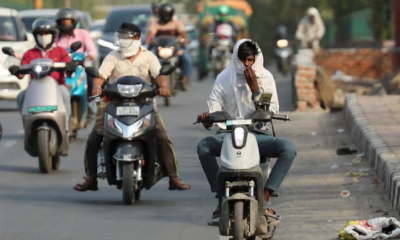Climate Change
Hot weather poses new risk after deadly Houston storms

As the Houston area works to clean up and restore power to hundreds of thousands after deadly storms left at least seven people dead, it will do so amid a smog warning and scorching temperatures that could pose health risks.
National Weather Service meteorologist Marc Chenard said on Saturday that highs of around 32.2 C were expected through the start of the coming week, with heat indexes likely approaching 38 C by midweek, Associated Press reported.
“We expect the impact of the heat to gradually increase … we will start to see that heat risk increase Tuesday into Wednesday through Friday,” Chenard said.
The heat index is what the temperature feels like to the human body when humidity is combined with the air temperature, according to the weather service.
Heavy rainfall was possible in eastern Louisiana and central Alabama on Saturday, and parts of Louisiana were also at risk for flooding.
The Houston Health Department said it would distribute 400 free portable air conditioners to area seniors, people with disabilities and caregivers of disabled children to contend with the heat.
The widespread destruction of Thursday’s storms brought much of Houston to a standstill, AP reported.
Thunderstorms and hurricane-force winds tore through the city — decimating the facade of one brick building and leaving trees, debris and shattered glass on the streets. A tornado also touched down near the northwest Houston suburb of Cypress.
More than a half-million homes and businesses in Texas remained without electricity by midday Saturday, according to PowerOutage.us.
Another 21,000 customers were also without power in Louisiana, where strong winds and a suspected tornado hit.
CenterPoint Energy said power restoration could take several days or longer in some areas.
Harris County Judge Lina Hidalgo and Whitmire both signed disaster declarations, paving the way for state and federal storm recovery assistance.
A separate disaster declaration from President Joe Biden makes federal funding available to people in seven Texas counties — including Harris — that have been affected by severe storms, straight-line winds, tornadoes and flooding since April 26.
Climate Change
Heat wave kills at least 56 in India, nearly 25,000 heat stroke cases, from March-May
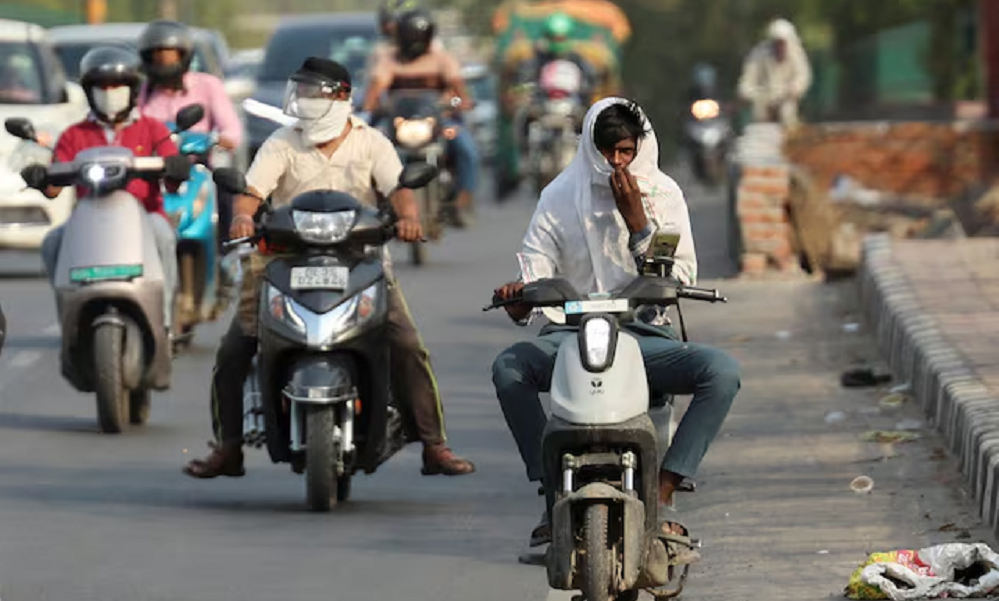
India saw nearly 25,000 cases of suspected heat stroke and 56 people lost their lives after several heat wave days across the country from March to May, local media reported, citing government data.
May has been a particularly bad month for the region, with temperature in capital Delhi and nearby state of Rajasthan touching 50 degrees Celsius, Reuters reported.
In contrast, parts of eastern India have been reeling under the impact of cyclone Remal. Heavy rain in the north eastern state of Assam has killed 14 people since Tuesday.
In the island nation of Sri Lanka, at least 15 people have died due to flooding and landslides after heavy monsoon rain lashed the region, the country’s Disaster Management Centre (DMC) said on Sunday.
A confluence of factors has led to a very hot summer in South Asia, a trend scientists say has been worsened by human-driven climate change.
At least 33 people, including election officials on duty in India’s just-concluded general election, died of suspected heatstroke in the states of Uttar Pradesh and Bihar in the north, and Odisha in the east on Friday.
Data from the National Centre of Disease Control (NCDC) showed that the situation was the worst in May, with 46 heat-related deaths and 19,189 suspected heat stroke cases, news website The Print reported.
Including suspected cases, the total number of deaths in India could be much higher at 80, newspaper The Hindu reported.
Over 5,000 cases of heatstroke were detected in the central state of Madhya Pradesh alone.
The weather office has predicted that heat wave conditions will be less severe till Wednesday and an early arrival of monsoon in the southern state of Kerala last week is expected to bring more relief.
Climate Change
Pakistan battles forest fires amidst heat wave

Authorities in Pakistan battled forest fires in multiple areas, including the capital Islamabad, on Friday as the country grappled with heat waves and dry weather.
Officials are yet to confirm if the fires are related to the high temperatures or due to arson.
Parts of Pakistan have seen temperatures as high as 52.2 degrees centigrade (126 F) over the last week with South Asia sweltering in a hotter summer this year – a trend scientists say has been worsened by human-driven climate change.
Plumes of smoke could be seen rising from a raging fire in the hills of Islamabad with temperatures hitting 41 degrees centigrade on Friday afternoon.
“It is difficult to get a fire brigade there; rescue officials are trying how to douse the fire,” a police official in Islamabad, Sohail Khan, told Reuters, adding that it was not certain if the fires were heat-related or cases of arson.
A spokesman for the Islamabad police said they were investigating the reasons for the fire and a special team had been formed for the probe by the city’s police chief.
A member of the Islamabad Wildlife Board, Waqar Zakaria, said the fire could be a case of “wilful arson”, adding that high temperatures have continued longer than usual and May has been drier than normal, leading to fires spreading faster because of dry vegetation.
An area in Punjab close to Islamabad, Kallar Kahar, also saw fire engulf 25 acres of grassland, the province’s disaster management (PDMA) said, adding that the flames, which had spread rapidly, had been contained.
“The Kalar Kahar forest fire might be a heat-related eruption,” PDMA spokesman Mazhar Hussain told Reuters.
Forest fires were also seen in Lower Dir, 250 km (155 miles) northwest of Islamabad, local resident Mohammad Jalil told Reuters by phone, adding that the flames had begun engulfing hundreds of trees four days ago and were yet to be controlled.
Pakistan is seen as by global organisations as one of the most vulnerable countries to extreme weather and climate change. In 2022, floods wreaked havoc in the country, killing over 1,700 people and displacing millions.
In India, at least 15 people died of suspected heat-stroke on Thursday with the region gripped by a debilitating heat wave expected to continue until Saturday.
(Reuters)
Climate Change
Cyclone kills 16 in India, Bangladesh and cuts power to millions
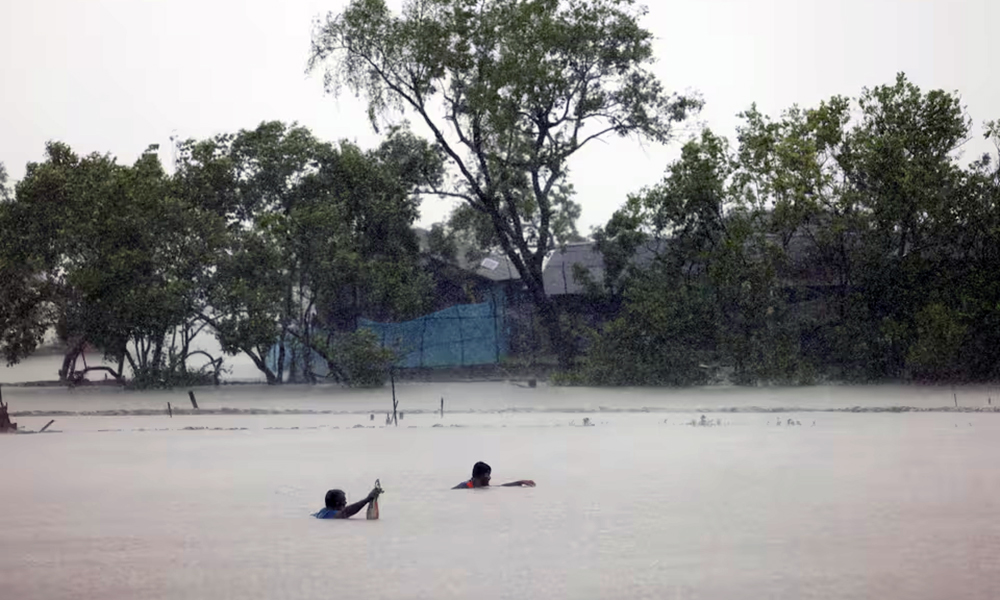
Strong gales and heavy rain triggered by the first major cyclone of the year lashed the coastlines of India and Bangladesh on Monday, killing at least 16 people and cutting power to millions.
The winds had not stopped as night fell, with water rising in many places and overwhelming drainage systems, Bangladeshi climate expert Liakath Ali said.
“Many people are stranded – it will be another long night ahead with millions not having electricity or shelter,” he said in a statement. “And people having no idea of how damaged their homes, land and livestock are.”
Cyclone Remal is the first of the frequent storms expected to pound the low-lying coasts of the South Asian neighbors this year as climate change drives up surface temperatures at sea, Reuters reported.
Packing speeds of up to 135 kph, it crossed the area around Bangladesh’s southern port of Mongla and the adjoining Sagar Islands in India’s West Bengal late on Sunday, weather officials said, making landfall at about 9 p.m.
More than 8.4 million people, including 3.2 million children, are at high health, nutrition, sanitation and safety risk, said Sheldon Yett, UNICEF Representative to Bangladesh.
At least 10 people were killed in Bangladesh, disaster management chief Mijanur Rahman told Reuters, adding some victims died en route to shelters or when their homes or walls collapsed, or drowned during the storm.
“People are usually very reluctant to leave their livestock and homes to go to cyclone shelters,” he said. “They wait until the last minute when it is often too late.”
State Minister for Disaster Management and Relief Mohibbur Rahman said the cyclone destroyed nearly 35,000 homes across 19 districts. An additional 115,000 homes were partially damaged.
In India’s West Bengal state, four people were electrocuted, authorities said, taking the death toll in the state to six.
Bangladesh shut down electricity supply to some areas in advance to avoid accidents, while in many coastal towns fallen trees and snapped electricity lines further disrupted supply, power ministry officials said.
Nearly 3 million people in Bangladesh were without electricity, officials added. West Bengal authorities said at least 1,200 power poles were uprooted, while 300 mud huts had been razed.
Flooded roads disrupted travel in the Bangladeshi capital of Dhaka. Rain also flooded many streets in the Indian city of Kolkata, with reports of wall collapses and at least 52 fallen trees.
Kolkata resumed flights after more than 50 were cancelled from Sunday. Suburban train services were also restored.
Both nations moved nearly a million people to storm shelters, about 800,000 in Bangladesh and roughly 110,000 in India, authorities said.
-

 Sport4 days ago
Sport4 days agoWeather washes out Afghanistan v Oman T20 World Cup warm up match
-
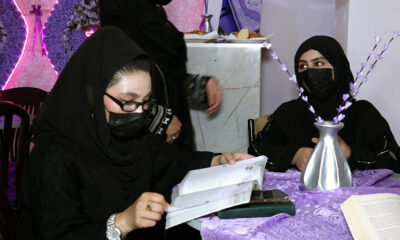
 Latest News4 days ago
Latest News4 days agoGroup of women open coffee shop in Kabul
-

 Latest News4 days ago
Latest News4 days agoNearly 1,000 Afghan refugees deported from Pakistan in one day
-

 Sport3 days ago
Sport3 days agoAfghanistan beat Scotland by 55 runs in T20 World Cup warm-up
-

 Sport4 days ago
Sport4 days agoAll you need to know about this year’s T20 World Cup groups
-

 Business3 days ago
Business3 days agoCentral bank warns against dealing with unlicensed money changers
-
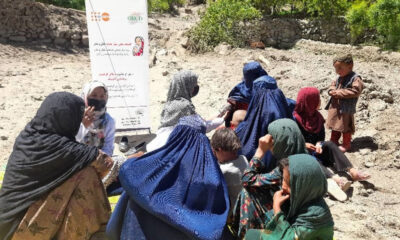
 Latest News3 days ago
Latest News3 days agoHealth teams sent to flood affected areas in Afghanistan with the help of UN
-

 Regional3 days ago
Regional3 days agoBus falls into gorge in India’s Jammu, killing at least 21










